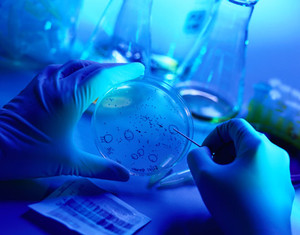How much similarity does a biosimilar monoclonal antibody (mAb) have to show to its reference mAb? The European overarching biosimilar guideline states that a biosimilar needs to be ‘similar, in molecular and biological terms, to the active substance of the reference medicinal product.’ The guideline gives an example to highlight this, stating that an interferon alfa-2b would not be acceptable as a reference product to a biosimilar interferon alfa-2a1. Because interferon alfa-2a and alfa-2b differ in only one amino acid, the guideline thus indicates that the entire amino acid sequence of the two molecules should be identical.
How far does similarity go?
Biosimilars/Research
|
Posted 25/08/2010
 0
Post your comment
0
Post your comment

Does this mean a biosimilar mAb would really have to show the identical amino acid sequence in all parts of the molecule, including the framework regions and parts of the molecule that are not necessary for mediating the mechanism of action? This interpretation requires further reflection. Would minor structural differences be acceptable, if adequately justified? Monoclonal antibodies have a molecular weight of around 150 kD compared to the interferons at 19 kD.
How should a second-generation mAb be assessed if it does not share an identical primary amino acid sequence when compared with an already licensed product? It might have similar affinity, fine specificity, potency in vitro and nonclinical pharmacology. Yet if it were a humanised mAb versus a chimeric mAb it would definitely not be considered a biosimilar. This implies that the discovery and preclinical development of a second-generation mAb are stand-alone developments and would not necessarily lead to a biosimilar.
When the clinical development is considered, a second-generation clinical trial could be a stand-alone trial against standard therapy (which could also be the licensed mAb), possibly targeting a distinct patient population or a target indication other than that for which the first-generation product is licensed. So the term ‘second-generation mAb’ would apply and must not be used as synonym for ‘biosimilar mAb’. The development strategies of a true biosimilar mAb and a second-generation mAb are entirely different and the correct terminology is vital.
(see also The current EU regulatory framework governing biosimilars, Technical challenges in defining mAbs
and What clinical trials will be required for biosimilar mAbs?)
References:
Schneider CK, Kalinke U. Toward biosimilar monoclonal antibodies. Nat Biotechnol. 2008;26(9):985-90
European Medicines Agency (EMA), Committee for medicinal products for human use (CHMP), Guideline on similar biological medicinal products, CHMP/437/04, London, 30 October 2005
News
FDA approves six denosumab biosimilars
EMA recommends approval for four biosimilars targeting three therapies
General
Samsung Bioepis wins Pyzchiva case; Regeneron patent rulings threaten foreign biosimilars
Chinese biosimilars go global: growth, partnerships, and challenges
What is the future for the US biosimilar interchangeability designation

Biosimilars/Research Posted 05/06/2025
Biosimilar clinical efficacy studies: are they still necessary?

Biosimilars/Research Posted 27/05/2025
The best selling biotechnology drugs of 2008: the next biosimilars targets








Post your comment